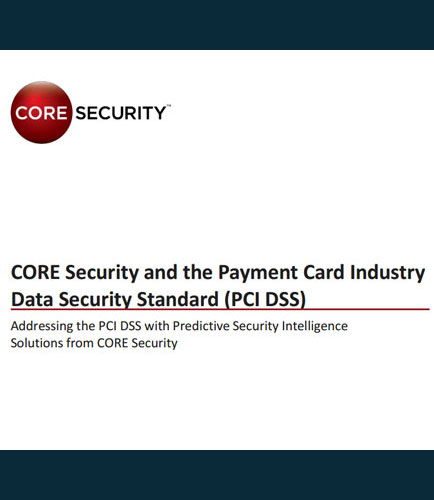
PROCESSING. PLEASE WAIT...

White Paper: CORE Security
The Payment Card Industry Data Security Standards (PCIDSS) is a set of comprehensive requirements for enhancing payment account data security and forms industry best practice for any entity that stores, processes and transmits cardholder data.
Is the payment card data security is worrying your business?
The intent of this whitepaper is to help you understand the PCI DSS standards and to apply it to your payment card industry transaction environment. It highlights:
The PCI data security standards: A mandate for cardholder security
Security testing for PCI validation and compliance in payment card industry
Fulfill the Penetration Testing Requirement and more
Read this whitepaper which explains the importance of PCI Dss standards and how they can be easily attainable by all organization to get rid of the complexity that the organizations face to protect the card hard holder data and the 12 key requirements to be followed for the PCI compliance for your organization.

By: Quantum
More and more enterprises are faced with the complex challenge of managing the exponential data growth. Digital data hoarding is one of the biggest IT concerns for businesses globally. The plethora of new and improved tools for capturing, generating, analyzing and otherwise leveraging stored data has resulted in explosive data growth—and managing that data growth is a primary challenge for IT organizations in all industries. This whitepaper helps you develop a deeper appreciation for the dynamics of data hoarding. In this whitepaper you will learn why data hoarders behave as they do, and gain insights into strategies and tools you can use to meet their needs—all while adhering to your budget requirements. It highlights: -Common attributes of some example data hoarders -Use case requirements and storage technologies -Storage components and best fit uses -Best practices for the hoarders in your organization
By: StarLeaf
Skype for Business is fast becoming the most widely-used single vendor unified communications platform. However, as the enterprise implements Skype for Business, it hits a seemingly impossible barrier, realizing complete video communication and collaboration. There is no easy or elegant way for existing video conferencing equipment to seamlessly integrate with Skype for Business. This whitepaper addresses what the available migration strategies for video calling and conferencing are, and how interoperability between Skype for Business and professional video systems can be achieved for inter and intra-company calls. It highlights: How to bridge the gap between Skype for Business and legacy H.323 meeting room systems on a scheduled meet-me basis ‘Do nothing’ strategy- Both the video conferencing rooms and Skype for Business are maintained in parallel How to achieve direct calling and conferencing for all, while maintaining current legacy room systems, registered directly to the video cloud


 2025 All Rights Reserved | by: www.ciowhitepapersreview.com
2025 All Rights Reserved | by: www.ciowhitepapersreview.com